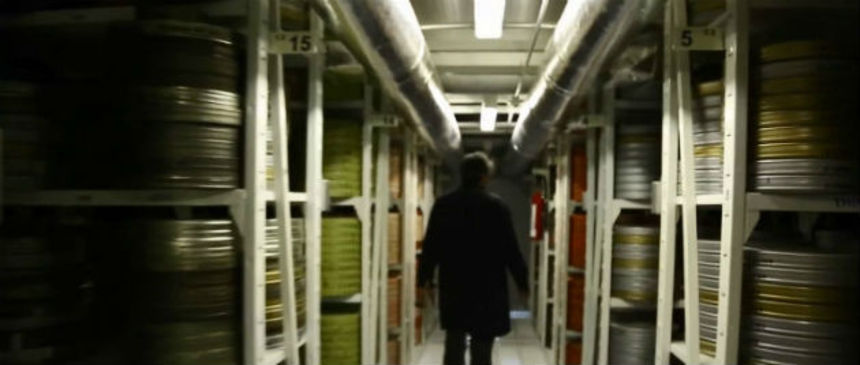Mórbido Mérida 2014 Review: JIRON, How A Movie By A Major Filmmaker Disappeared

Full disclosure: I was completely ignorant of Mexican filmmaker Carlos Enrique Taboada before watching this movie. Thus, Jirón (Shred), a new documentary by Christian Cueva, proved to be educational, fascinating, and compelling, not only because it explores the disappearance of Taboada's final film, but also by making clear why it's a tragedy.
Nowadays it's common thinking that every movie ever made must be available in one form or another, either streaming on the internet or on some form of physical media. The reality, of course, is far different. The vast majority of silent films have disappeared entirely, and many sound movies are no longer available to the public in any form, while others exist in home video formats that are becoming increasingly rare.
The case of Jirón de niebla (Shred of Mist, 1989), however, is different. As explained in the documentary: It disappeared before anyone got to see it.
Carlos Enrique Taboada is the filmmaker in question. He wrote dozens of movies and directed more than 20 in a career that stretched across four decades. It is his four horror movies that have drawn the most attention, though: Even the Wind Is Afraid (Hasta el viento tiene miedo; 1968), The Book of Stone (El libro de piedra, 1969), Darker Than Night (Más negro que la noche, 1975), and Poison for the Fairies (Veneno para las hadas, 1986).
These movies have left strong, lasting impressions on viewers, especially in Mexico, where they continue to be shown on television on a regular basis. Director Adrian Garcia Bodigliano, in an interview that kicks off Jirón, describes Taboada as "the hidden gem of the horror worldwide cinema." Pabo Guisa, director of the Morbido Film Fest, says that "in many ways he is the missing link of Mexican horror," and Morbido programmer Abraham Castillo calls him "The Duke of Horror, who guarded the castle of genre like nobody else in this country."
Artfully constructed, Jirón establishes Taboada's credentials by examining each of those four films; interview subjects not only recall favorite scenes, but also why those scenes crawled into their memory, and place them into historical context. In contrast, in his last video interview conducted just before he died in 1997, Taboada is pragmatic, concluding that audiences just didn't like his movies. What could he do about it?
Interviews with cast and crew members from his final film tell a vivid story, painting a picture of a major filmmaker who very much knew what he wanted and how to achieve the effect desired. Even with a tiny budget, he had a clear vision for his movie, and he breaks down those components in an interview.
And, as the 'making of' story of Jirón de niebla is told, director Cueva unfolds the history of Taboada's career, cutting back and forth from the two main narratives, each thread shedding light on the other, along with a third strand that follows a trip to the main film archive in Mexico, in search of the director's films. As an archivist searches for the 35mm reels, I couldn't help but feel a touch of despair, not only that Taboada's final film may have disappeared forever, but that a masterful work of horror might be missing in the world. Who knows, maybe it didn't turn out as well as seemingly everyone connected with the project wishes. But maybe it did.
The holes in my knowledge of cinema become more apparent to me with the passing years. But thanks to Jirón, I know the next hole I want to fill: the horror movies of Carlos Enrique Taboada.
All of them.
The film debuted at Morbido Fest in Puebla, Mexico in October. It screens again at Mórbido Mérida in Mérida, Yucatán tonight, December 10. Visit the official site for more information.







